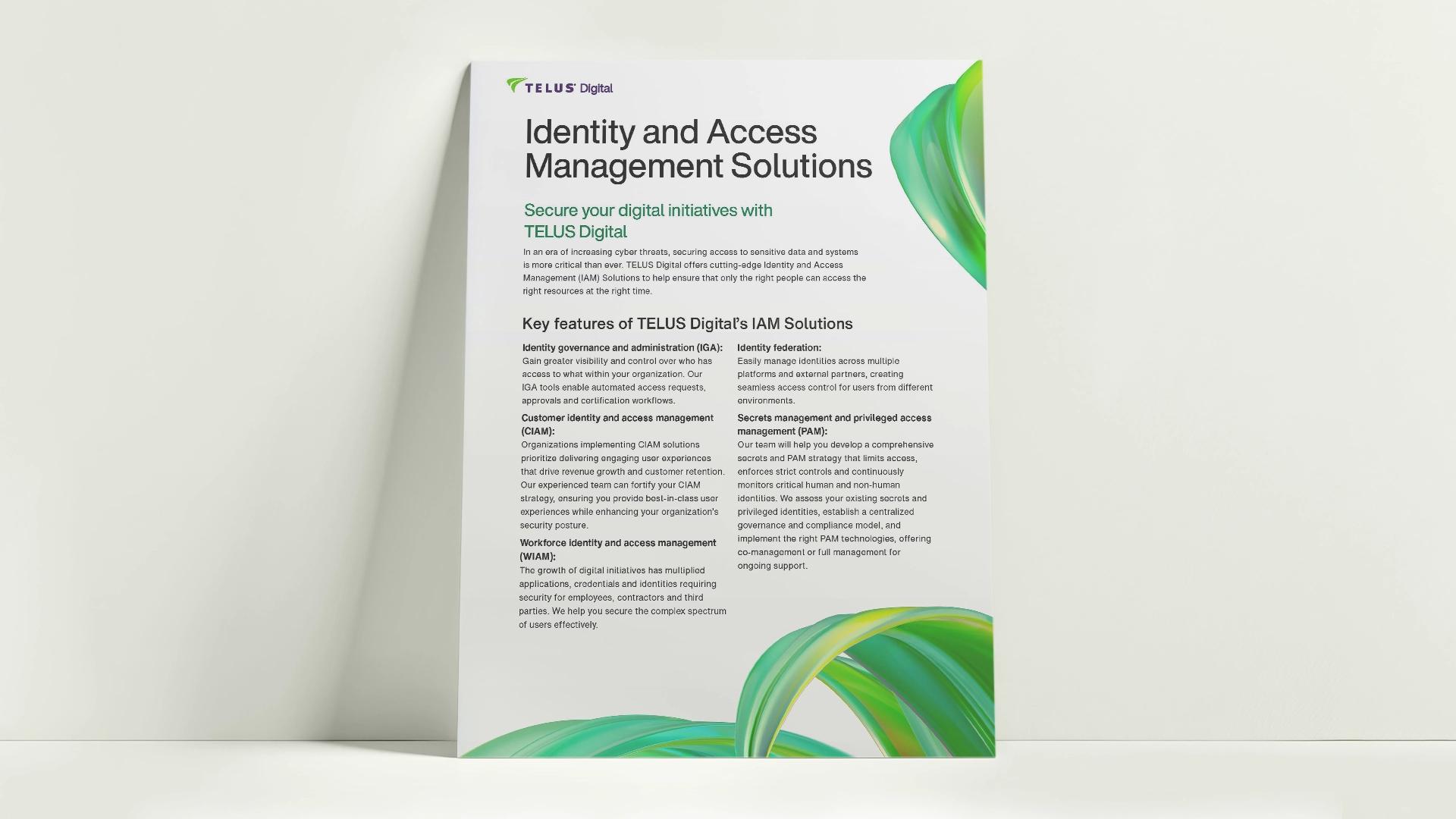Identity and access management
What is identity and access management (IAM)?
Identity and access management (IAM) is a cybersecurity framework that ensures only authorized individuals and systems can access an organization's digital resources — like emails, applications and databases. IAM controls user authentication and permissions, safeguarding sensitive data and preventing unauthorized access.
Identity and access management extends beyond employees to contractors, vendors and business partners. It ensures secure access across all touchpoints, whether on-premises, in the cloud or on personal devices.
How identity and access management works
IAM consists of two primary components: identity management and access management. Identity management involves verifying a user’s credentials against an identity database, ensuring that only legitimate individuals and devices are recognized. Access management then determines what resources a verified user can interact with, enforcing permissions based on role, security level and contextual factors like location or device.
A key approach to access management is role-based access control (RBAC), which grants permissions based on a user’s role within the organization rather than on an individual basis. This structured approach ensures users only have access to the resources necessary for their job functions.
To enhance security, IAM solutions use various authentication methods, including:
- Multi-factor authentication (MFA): Requires users to verify their identity using two or more authentication factors, such as a password and a one-time security code.
- Single sign-on (SSO): Allows users to access multiple applications with one set of login credentials, reducing password fatigue and improving security.
- Adaptive authentication: Uses AI to assess risk levels in real-time, adjusting authentication requirements based on user behavior and contextual factors.
Benefits of identity and access management
Implementing IAM provides a range of benefits, including:
- Enhanced security and data protection: IAM mitigates security threats by preventing unauthorized access, reducing the risk of data breaches, insider threats and cyberattacks.
- Increased operational efficiency: By automating authentication and authorization, IAM reduces login friction and allows employees to access business applications seamlessly.
- Regulatory compliance: IAM helps organizations adhere to data protection regulations such as GDPR, HIPAA and SOC 2 by enforcing access policies, monitoring user activity and maintaining audit trails.
- Reduced IT workload: Automating account management tasks such as password resets and access provisioning, frees up IT resources to focus on strategic initiatives rather than routine administrative work.
- Improved collaboration: Secure access controls ensure that users have the right permissions to perform their tasks without delays. Employees, contractors and third-party partners can collaborate more efficiently while maintaining strict data security, enabling seamless workflows and reducing bottlenecks.
- Scalability: IAM solutions are designed to adapt to an organization's evolving needs, ensuring that as the business grows, access management can scale accordingly without compromising security.
By implementing a robust IAM strategy, organizations can balance security and usability, ensuring the right individuals have access to the right resources at the right time — while keeping cyber threats at bay.




